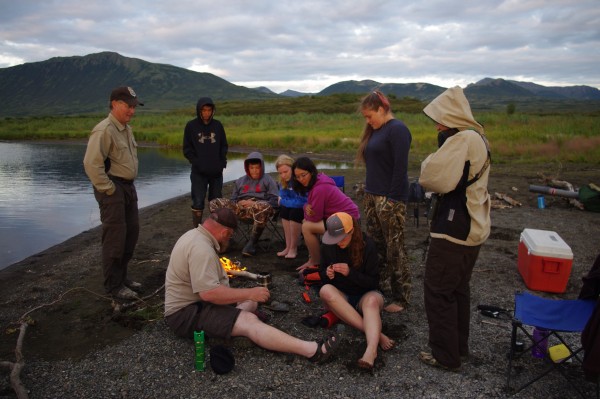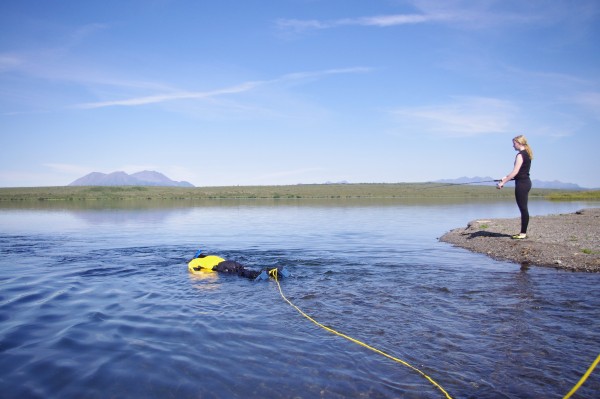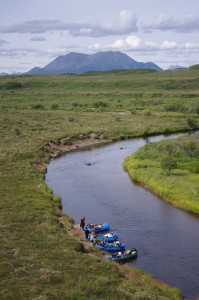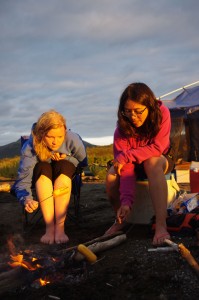The Togiak National Wildlife Refuge encompasses 4.7 million acres in southwestern Alaska, from the west side of Bristol Bay, near Dillingham, west to Togiak and north to the Quinhagak and Platinum region. Each year, refuge staff organizes a high school science camp, conducted via float trip, to show area students a little sliver of the refuge in their backyard. Earlier this month, six students from Dillingham and Twin Hills floated the Pungokepuk River.

Bristol Bay is known for fish, and the Togiak National Wildlife Refuge is no exception.
During the high school float camp on the Pungo river, it was rainbows and resident fish, not reds, that lured anglers to keep casting.
“Good day, I should be tallying up what fish I catch.”
That was Savanna Sage catching yet another a rainbow, while Refuge Manager Susanna Henry rowed our inflatable blue raft down stream. Prior to the trip, she had caught just one rainbow this summer, up at Lake Alegnagik.
A day into the trip, her tally was up to more than half a dozen, and climbing.

The Pungo stretches 16 miles from Pungokepuk Lake to the Togiak River. The sun was shining nearly the entire time we were on the water, and until the final day, a light breeze kept the bugs away.
And while 16 miles might sound like a short trip – there’s enough fish in the Pungo to make every mile last. It took us four days, with plenty of stops for fishing.
Drew Wasilly caught his first rainbow on the trip. But he said it was his tentmate and fishing partner, Carleton Small of Twin Hills, who was the most prolific fisher.

“He’s the rainbow slaying machine.”
That doesn’t include the smolt caught by the whole group.
Campers set out minnow traps before bed on the first night, baited with bacon. The next morning, refuge education specialist Terry Fuller helped intern Connor Ito and the campers ID the smolt they found waiting for them.
“I’ve got a little bit of white and black look.”
“Yes.”
“So this is a silver.”
“There are silvers to be found.”
Camp wasn’t just about catching fish. Students put on a dry suit to snorkel with fish. And there were non-fishy activities, too – fire-building, berry-picking, a leave-no-trace activity, and hours on the river identifying plants and birds.

But Ito, a former camper herself, offered perhaps the most important lesson of all: how to roast Twinkies.
“Now you want to very slowly roast the Twinkie until it is crunchy and golden brown on the outside, more than it already is, and the filling is bubbling out of the holes on the bottom.”
The verdict?
“It tastes more buttery,” Sage said.
“He caught another rainbow.”
And it’s back to fishing on Pungo Lake.




